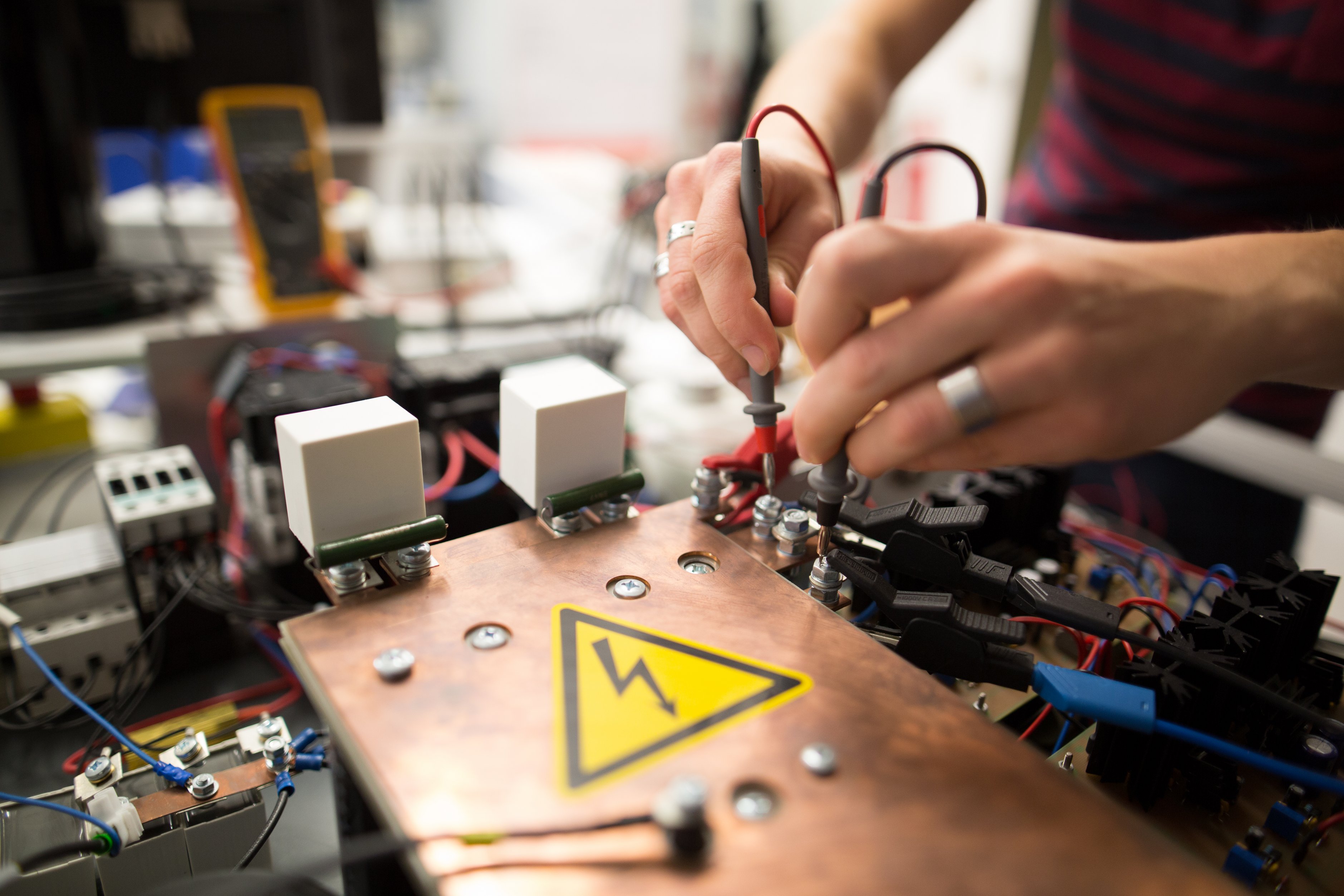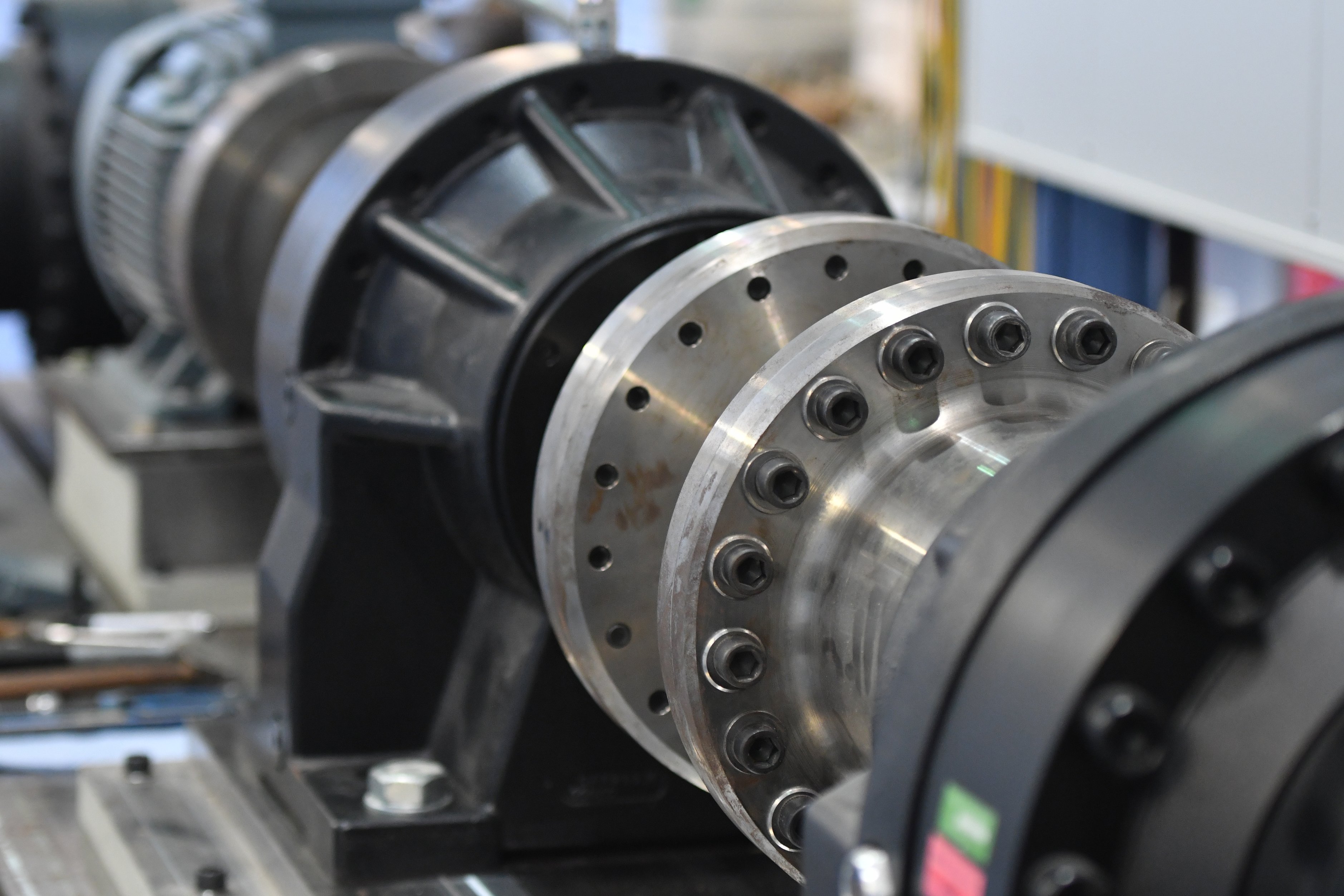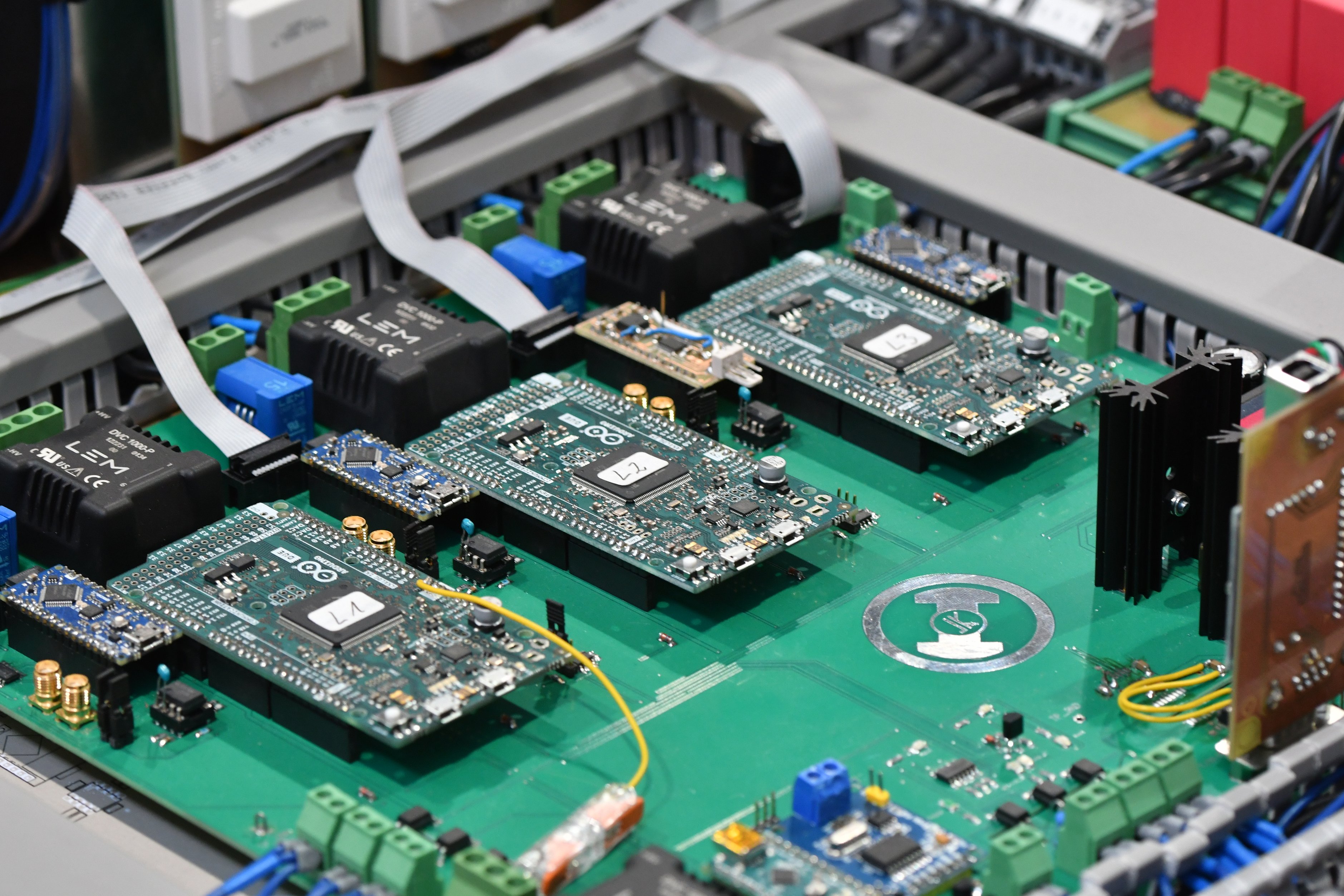The Power Mechatronics working group deals with the interaction of the classical engineering sciences of mechanical engineering, electrical engineering and information technology. The main areas of research range from classic electrical drive technology to power electronics in combination with modern control technology to “energy conditioning” in electrical power distribution networks.
One particular innovation of recent years is the virtual synchronous machine (VISMA). The VISMA was developed at the IEE [Dissertation Ralf Hesse 2007: Die virtuelle Synchronmaschine], a patent application has been filed (Patent: Netzqualität und Versorgungssicherheitsverbessersverfahren (VISMA); file no: DE 2006 047 792.8; filing date: October 6, 2006; European patent application: 07875183.1-2207; EU patent no.: 2070174; US patent application: PCT/IB2007/004721; US patent no.: US 8,510,090 B2; filing date: 09.10.2007; US patent granted on: 13.08.2013; Japan patent no.: JP 544 2440 B2; Japan patent granted on: 12.03.2014) and represents a specially controlled inverter which can serve as a grid connection element for various electrical direct current sources. It enables the inverter to behave similarly to an electromechanical synchronous machine from a grid perspective. This means that the proven properties of the synchronous machine in terms of grid stability and grid control can also be utilized for the grid in the course of substituting conventional power plants with renewable energy sources. The aim is to maintain the current stability and quality of the electrical energy supply grids despite the increasing number of decentralized energy producers. The properties of a VISMA are largely dependent on the machine model implemented in it, which simulates the operating behavior of a synchronous machine in real time at a given voltage and ultimately specifies the reference variable of the impressed multiphase alternating current for the inverter control. VISMA is constantly being further developed in current projects.
Another focus of the working group is vibration damping in vibrating mechatronic drive systems. This involves the use of a new type of electronically controlled damping ring that effectively damps frequencies between 30 and 70Hz (patent: Fast broadband compensator for interfering torsional vibrations; file number: 10 2012 100 187.1; Application date: 09.12.2010). In addition, in the past, model-scale motor test benches were developed for industry to simulate a transmission test bench in the megawatt range or to simulate grid faults on the mechanical drive train of grid-connected wind turbines.
The group is currently working on the following projects:
- ALene: Analysis and development of concepts for the control of 4-branch inverters, initially through simulation and subsequently through practical implementation. The aim is to develop a robust software and hardware solution that is tested and tested and optimized in collaboration with industry partners.
- DäToNa: Active damping of torsional vibrations in long and difficult-to-access drive shafts with in-process, adaptive tracking of dynamic load input functions using the Stribeck curve as an example
A selection of topics worked on in the past:
- CoNDyNet II - Comparison of different power converter concepts in parallel operation
- Active vibration damping - analysis and damping of vibrations in drive technology
- Wind gearbox test bench for simulating grid faults - effects of grid faults on the mechanical drive train of grid-connected wind turbines
- Motor test benches on a model scale - simulation of a gearbox test bench to optimize the drive and damping controller




